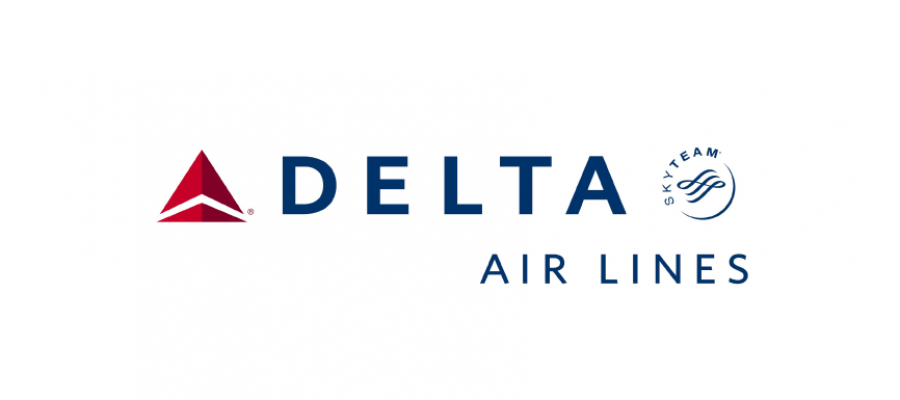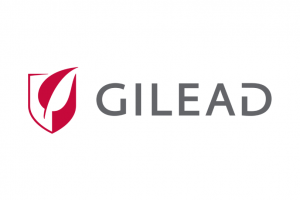Delta Airlines (DAL) Stock Chart Follow-Up
This Delta Airlines (DAL) stock chart update will review the price action for DAL’s share price as it progresses towards some of its price targets. For a refresher on the price targets I established, take a moment and go back to read the previous article titled “3/7/2017 – Delta Airlines (DAL) Stock Chart Review“.
In that previous update, I suggested that if DAL’s share price did have one last push upwards, it should find support around the $46 area during its current pullback.
Let’s start out with a 5 year monthly candlestick chart. As of Friday’s market close, DAL’s closing share price was at $45.96, basically right at the $46 support area I discussed in the previous update. As illustrated previously, there is a strong confluence of longer-term bearish candlestick patterns all in the same price area. Getting through the resistance areas created by all these bearish candlestick patterns is going to take some good news and above average buying volume. Right now though, the trend for its share price is down, as anticipated in the previous article.

Analyzing a Confluence of Bearish Candlestick Patterns on a 5 Year Monthly Delta Airlines (DAL) Stock Chart
The MACD Histogram reflected a little bit of selling momentum in March 2017. Based on this, one could imagine a continued slight selling of shares into its upcoming earnings report in 2 weeks. Especially considering the[s2If !current_user_can(access_s2member_level1)]……………..
If you want to continue reading this article for Delta Airlines, you must first login. I review pullback areas and the items to monitor in those pullback areas.
If you are not a current Trendy Stock Charts member, consider joining today! There are several different subscription plans to chose from.[/s2If][s2If current_user_can(access_s2member_level1)] Bearish Engulfing candlestick pattern that developed in March 2017 on selling volume that was greater than the previous months volume. The Bearish Engulfing candlestick pattern in March 2017 was just one of several bearish candlestick patterns in the confluence area of several.
DAL – Moving Averages Analysis
In the previous stock chart update for DAL on March 7, DAL’s share price had just broken below the 20 Day and 50 Day moving averages. This sort of price action typically indicates a period of consolidation. With the development of a Golden Cross pattern in the not too distant past, there is a good chance the consolidation period will be shorter-term in nature.
This is a 1 year daily candlestick chart for Delta Airlines. In addition to the moving average lines, I’ve also overlaid a Fibonacci Retracement Tool on its previous uptrend. A 50% or a 61.8% retracement is the most common for a new uptrend that is consolidating.

Analyzing a 1 Year Candlestick Chart for Delta Airlines Using Moving Averages and a Fibonacci Retracement Tool
Purchasing shares to go long on the 1st pullback to the 200 Day moving average line immediately after the development of a Golden Cross pattern is a trade set-up I mention quite a bit. It is mentioned quite a bit because the trade set-up usually involves lower risk area to make an initial scale-in entry point and go long the stock.
DAL – Fibonacci Fan
This is a 1 year daily candlestick chart with a Fibonacci Fan Tool overlaid on it. The best purchases to go long on a stock are made either in the lower quadrant or a break below the lower quadrant of the Fibonacci Fan Tool.
A continued pullback as expected to the $40 – $42 area could be the break below the lower quadrant of the Fibonacci Fan Tool that offers an excellent entry point to go long.
However, let’s also zoom out and place a Fibonacci Fan Tool on DAL’s previous couple year uptrend. This is a 5 year weekly candlestick chart.
This longer-term look using a Fibonacci Fan Tool agrees with the long-term Fibonacci Extension Tool used below to calculate downside risk areas. A break below the lower quadrant of the long-term Fibonacci Fan Tool is not only going to involve a little more time, but also a trip towards the longer-term downside risk area.
This longer-term Fibonacci Fan Tool perspective suggests that if you don’t want to trade DAL but instead own it, then you are going to need more patience and time.
Monitor the MACD Histogram for any early indicators of a reversal, but make certain to confirm the reversal with other indicators like a candlestick pattern, trendline, moving average, etc.
I talk about some of the downside risk areas, both shorter-term and longer-term in the next section.
DAL – Downside Risk Calculations
This is a 3 year weekly candlestick chart with 2 different Fibonacci Extension Tools overlaid on it to calculate some downside risk areas. The black Fibonacci Extension Tool represents the long-term downside risk calculations while the red tool calculates some of the shorter-term downside risk areas. Basically the shorter-term tool can be used to calculate potential rebound areas in the overall larger downtrend.

Using Fibonacci Extension Tools on a 3 Year Weekly Candlestick Chart to Measure Downside Risk for Delta Airlines (DAL) Share Price
With a medium-term (weekly) MACD Histogram that is still reflecting selling momentum, progression towards the shorter-term price targets is anticipated. That would be the $40 – $42 price range. If DAL’s share price does not rebound from that price level with buying volume that is above the average weekly trading volume, then that indicates to me that the $40 – $42 support level may not hold.
At a minimum, you want the MACD Histogram on the weekly chart to show 2 consecutive weeks of selling momentum that is decreasing before making a scale-in purchase.
If you are looking for an entry point to go long the stock, consider monitoring DAL’s daily charts also for any bearish reversal candlestick patterns. Any bearish reversal candlestick patterns on a daily chart can be an earlier indicator as to whether or not the $40 – $42 support area will hold. If the $40 – $42 price level does not hold, the $32 area is the next level of support. Since DAL reports earnings on April 13, 2017 before the market opens, it may be best to wait until at least 1 day after earnings to make any initial scale-in purchase. Make sure that 200 Day moving average is going to provide support.
Delta Airlines (DAL) Stock Chart Summary
The Golden Cross pattern trade set-up appears to be in process. However, due to the confluence of long-term bearish candlestick patterns noted on DAL’s 5 year monthly chart, be certain that DAL’s share price rebounds from the 200 Day moving average line in strong buying volume. If DAL’s share price dips below the 200 Day moving average and you make an initial scale-in purchase, make certain that DAL’s share price does not continue pushing down and start gaining selling volume.
Due to the long-term downside risk associated with this trade, waiting until after the next earnings report seems to be the best trade at this point.
If DAL’s share price can find support in the $40 – $42 range though and starts to rebound on stronger than average buying volume, making an initial scale-in entry at that point is recommended. But because only the bare minimum price target has been met longer-term, be careful to exit the trade fast if the share price starts to see any subsequent selling pressure. The minimum longer-term price target is the 61.8% Target Line from the black Fibonacci Extension Tool on the 3 year weekly candlestick chart. The black 61.8% Target Line has a $40.29 price target.
Any rebound that starts to slow from the $40 area should be analyzed immediately. There is a good chance that the rebound is over and a trip towards the longer-term $32 price target is in effect.
From a risk/reward perspective, this trade requires a little more patience in order to get in at a lower risk area. Those wanting to trade the stock should purchase shares immediately upon the first visit to the $40 – $42 price area and look for a 5 – 10% trade higher.
[/s2If]

















Ask a Question. Make a Comment. Leave a Reply.